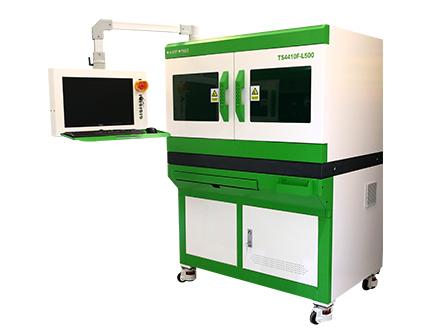What is Laser Trimming and Why Does it Matter?
Laser trimming is a precision process used to adjust the electrical parameters of components, most commonly resistors, by using a focused laser beam to finely remove material. The goal is to bring the component’s performance—such as resistance, capacitance, or voltage division—within strict tolerances.
Unlike mechanical trimming or burn-in techniques, laser trimming is non-contact, precise, and highly repeatable. It plays a critical role in high-reliability industries like aerospace, automotive, medical electronics, and industrial control.
How Does a Laser Trimming Machine Work?
A laser trimming machine integrates a high-precision laser source (usually UV or green wavelength), galvo scan head, vision system, and control software. The trimming process typically involves:
-
Measurement of electrical parameters in real time
-
Material removal via the laser to tune values accurately
-
Feedback loops for closed-loop trimming down to micro-ohm accuracy
Modern laser trimming machines like those from JCZ or other high-end providers can perform automated trimming on chip resistors, hybrid circuits, or thick/thin film substrates with incredible speed and precision.
Resistor Advantages Enhanced by Laser Trimming
Laser-trimmed resistors exhibit several key resistor advantages that make them indispensable in modern electronics:
| Feature | Advantage Gained Through Laser Trimming |
|---|---|
| Tight Tolerances | Achieve accuracy within ±0.01% or better |
| Long-Term Stability | Non-contact trimming avoids mechanical stress |
| Custom Specifications | On-demand tuning for resistance, voltage dividers |
| High Throughput | Automated process for mass production lines |
| Temperature Stability | Improved performance under variable conditions |
The ability to fine-tune components post-manufacture ensures better circuit behavior and system reliability—especially important in high-end applications.
Common Applications of Laser Trimming Technology
Laser trimming technology is widely used across industries where accuracy and reliability are non-negotiable. Typical applications include:
-
Medical electronics – Precision voltage dividers for imaging equipment
-
Automotive sensors – Calibrated resistors in ECUs and ADAS systems
-
Aerospace – High-reliability electronics with minimal tolerance for error
-
Industrial automation – Sensor and controller circuits
-
Telecom & 5G – RF and impedance-matched circuits
With the right laser trimming machine, manufacturers can handle even the most complex circuit layouts on ceramic, FR4, or glass substrates.
Future Trends in Laser Trimming Machines
New advancements in laser trimming machines are pushing boundaries even further:
-
AI-assisted trimming paths
-
Inline vision alignment and AOI integration
-
Real-time electrical feedback for multi-stage trimming
-
Industry 4.0 connectivity and MES integration
These developments help reduce cycle times, improve accuracy, and adapt to smaller, more complex resistor arrays used in today’s miniaturized electronics.
Conclusion: Why Laser Trimming is a Game-Changer for Resistor Technology
The combination of laser trimming precision and the inherent resistor advantages it enables makes this process a cornerstone of modern electronics manufacturing. As electronic devices continue to demand smaller size, higher reliability, and tighter tolerances, investing in a laser trimming machine offers manufacturers a strategic edge.
If your production relies on high-accuracy resistors or complex circuit calibration, laser trimming isn’t just an option—it’s a necessity.
Ready to Upgrade Your Resistor Calibration Process?
Contact us to learn more about high-precision laser trimming machines, and how they can boost the performance and yield of your electronics manufacturing line.

